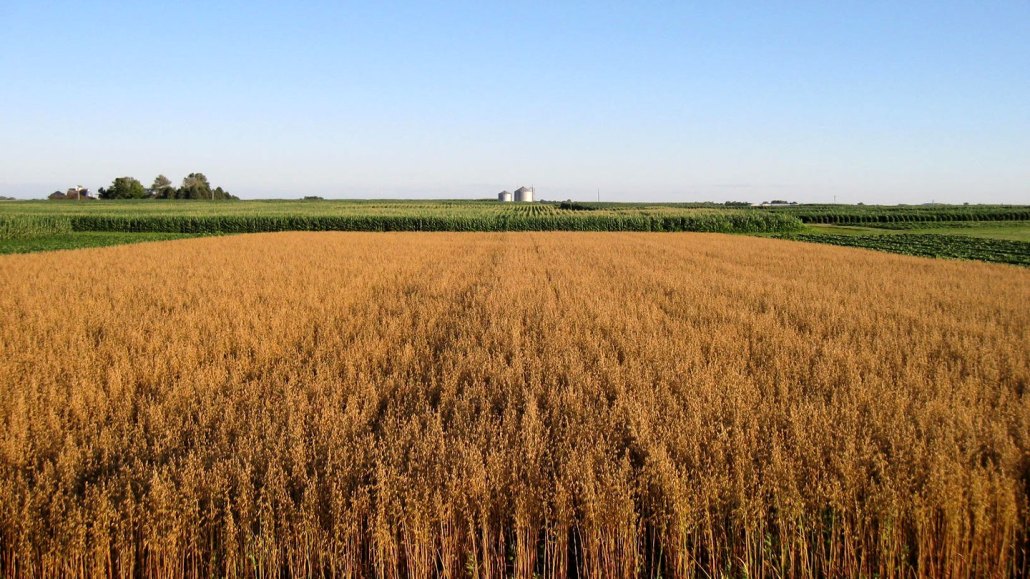Questions for ‘A secret climate superhero lies beneath our farms’

Could we change how we farm to help fight climate change? Researchers and farmers are working together to find ways to make soil healthier and reduce greenhouse-gas emissions. Iowa State University runs this research farm in Ames to study different planting cycles. Here, an oat crop is ready for harvest.
David Sundberg
Share this:
- Share via email (Opens in new window) Email
- Click to share on Facebook (Opens in new window) Facebook
- Click to share on X (Opens in new window) X
- Click to share on Pinterest (Opens in new window) Pinterest
- Click to share on Reddit (Opens in new window) Reddit
- Share to Google Classroom (Opens in new window) Google Classroom
- Click to print (Opens in new window) Print
To accompany ‘A secret climate superpower lies beneath our farms’
SCIENCE
Before Reading:
- Imagine the ideal farming soil. Describe two characteristics of soil that you think would make it especially good for farming. Then, describe two characteristics that would make a particular soil bad for farming. Do you think a farm’s soil quality typically stays the same or changes over the years? Explain your answer.
- Our atmosphere stores a lot of carbon in the form of carbon dioxide. Carbon dioxide is a greenhouse gas that has been worsening the climate-change problem. However, carbon occurs in many forms besides carbon dioxide. Living things, for example, also contain lots of carbon trapped in biomolecules that make up their bodies. Do you think carbon stored in living things contributes more, less or about the same to climate change as carbon dioxide in our atmosphere? Explain your answer.
During Reading:
- Carbon dioxide is a greenhouse gas. Name another carbon-containing greenhouse gas.
- Contrast the amount of carbon in Earth’s soil relative to carbon in the atmosphere. (In other words, which contains more and by how much?)
- List two human activities that might “free” trapped carbon in the soil.
- Identify one plant-related process that removes carbon from the atmosphere.
- How do healthy soils contribute to more productive farms? Give one example.
- No-till farming practices help preserve plant roots in the soil. How do these plant roots contribute to healthier soil over time?
- Mitchell Hora’s family adopted no-till farming practices in 1978. Since then, the soil health on the Hora farm has improved. Give one observation made by Hora that leads him to this conclusion.
- Wenjuan Huang and her team ran a 20-year-long experiment comparing farming practices. In this study, some farm fields received extra carbon inputs. However, despite this added carbon, scientists found that the amount of organic carbon stayed about the same over time. How did scientists explain this finding?
- Explain how clay particles in the soil contribute to soil health.
- What is the name of the process used to convert farming biomass waste into biochar?
After Reading:
- Imagine you are a scientist trying to help local farmers improve their soil’s health. The farmers are worried because their farms grow fewer crops each year. List two regenerative-agriculture techniques these farmers might use to improve their soil’s health. Imagine one of these farmers pushing back against your advice, saying that these changes have never been used on their farm before. Therefore, this farmer is reluctant to make those changes now. For each suggested technique, briefly explain to this farmer what benefit they might receive by implementing this advice.
- Give an example from this story of how microbes might improve soil health. Improved soil health often helps Earth’s climate as well. Use an example from this story to show how the benefits of soil microbes might translate into benefits for our climate.